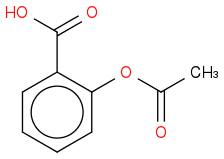Chemical Forums aims at helping chemistry students. That means many of the questions posted require use of formulae - either chemical ones (like H
2PO
4-) or mathematical ones (like [itex]E = E_0 + \frac {RT}{nF}\ln Q[/itex]). You may even need to use a structural formula like

To make your questions easier to understand for others, please do your best to properly format your posts, it increases your chances of getting a correct and fast answer. Entering structural formulae that are displayed as images is covered in the next post in this thread.
In general the best way to format chemical formulae is to use subscripts and superscripts. For example to enter formula of water you can enter it as H2O, mark 2 and click
sub button placed in the second row of icons above the edit field. It will add [sub][/sub] tags around 2 so that it will be displayed as
2, and water formula will be displayed as H
2O. Similarly you can use
sup button to format charges with [sup][/sup] tags. To make things faster some of the most often used numbers are also present in the line
Other symbols: above the edit field. While technically it is possible to enter chemical formulae using LaTeX, it is not recommended.
To enter some simple symbols like ° for temperature, middle dot for water of crystallization, Greek letters in the text and arrows, just click their symbols above the edit field.
Mathematical formulae should be entered using LaTeX. To enter formula that will stay in its own line surround it with [tеx][/tеx] tags, to enter formula that will stay inline surround it with [itеx][/itеx] tags. (It is also possible to use double $ and double # delimiters you may know from the LaTeX, but once again, we don't recommend it). There are many LaTeX tutorials on the web, and many quite comprehensive documents describing LaTeX use (like this one:
http://en.wikibooks.org/wiki/LaTeX/Mathematics), but the basics are very simple. For example if you enter ax^2 + bx +c = 0 (surrounded by the [tеx][/tеx] tags) it will be rendered as
[tex]ax^2 + bx + c = 0[/tex]
^ is for superscript, _ is for subscript of the following character (or group of characters). In LaTeX formulae you can easily enter Greek letters (enter the name preceded by the backslash - \Delta for Δ and \delta for δ, Greek letters listed above the edit field won't work here), group symbols using curly braces, create fractions and root symbols with LaTeX codes \frac (two following symbols or symbol groups will land in the nominator and denominator) and \sqrt (again, following symbol or symbols group will land under the root symbol) and so on:
[tex]x_{1,2} = \frac {-b\pm\sqrt\Delta}{2a}[/tex]
[tex]\frac 1 {2I} \left(\frac\hbar i\right)^2 \left[\frac 1 {\sin\theta} \frac \delta {\delta \theta} (\sin \theta \frac \delta {\delta\theta})+\frac 1 {\sin^2\theta} \frac {\delta^2}{\delta \phi ^2}\right]\Psi=E\Psi[/tex]
[tex]C \iiint^{+\infty}_{-\infty}e^{-\frac \beta {2m} (p^2_x+p^2_y+p^2_z)}dp_x dp_y dp_z = 1[/tex]
Please right-click the above equations and select
Show Math As->TeX Commands to see how it was entered. \pm generates ± symbol, \hbar generates ħ and so on.
If you want to test your LaTeX expressions before posting them at chemicalforums, you can do so at the
forkosh sandbox - just remember to add tex tags before posting your LaTeX here.
Please don't mix LaTeX and tags in a single formula, it is never necessary and never makes sense. You can mix them in a single post, but entering sulfuric acid as H[itex]_2[/itex]SO[itex]_4[/itex] (LaTeX subscript in normal text) instead of H
2SO
4 (tagged subscript in normal text) makes it look awkward and is not guaranteed to work correctly.
Note: [B] is the opening tag used to mark
bolded parts of the text. Unfortunately, exactly the same symbol is quite often used to denote concentration of a compound 'B', especially when dealing with equilibrium and kinetic equations. In effect in your post there will be no single [B] symbol present, instead, whole post from the first occurrence of [B] to the end will be bolded. There are two possible solutions. First, simple and fast one, is to enter additional space after the opening square bracket - that is, to use [ B] instead of [B]. Second it to use [nоbbc][/nоbbc] tags - whatever is between them is not treated as UBBC code, so [nоbbc][B][/nоbbc] is rendered as [B]. If you plan on using LaTeX you can be forced to use nobbc trick (outside of tex tags) as well.
And don't cry "hеlp!" in your posts. We know you need help, that's why you came here and posted. Your "hеlp!" will be replaced by "delete me*". It is an old joke built into forum many years ago.